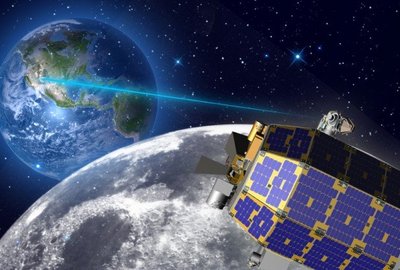Moon mission beams laser data back to Earth
The European Space Agency’s ground station on the island of Tenerife has received laser signals over a distance of 400,000 km from NASA’s latest lunar orbiter. The data were delivered many times faster than possible with traditional radio waves, marking a significant breakthrough in space communications.
The Lunar Atmosphere and Dust Environment Explorer, or LADEE, was launched on 7 September and arrived in orbit around the Moon in October. In addition to probing the Moon’s environment, it’s also carrying a new laser terminal.
This new approach promises data speeds far superior to traditional radio waves used today by satellites and ground stations, including ESA’s Estrack network.
ESA’s Optical Ground Station in Spain’s Canary Islands was upgraded with an advanced laser terminal developed in Switzerland and Denmark that can communicate with LADEE using highly focused beams.

“We acquired the first signals from LADEE on 26 October, and since then, we’ve had a series of optical uplinks and downlinks providing extremely fast laser communications,” says Zoran Sodnik, ESA’s project manager for the laser effort. “We’ve already received data at up to 40 Mbps.”
The contact with Tenerife came just days after LADEE made history on 18 October in the first-ever laser transmission from lunar orbit, picked up by a NASA station at White Sands, New Mexico, USA. The craft is also transmitting to a third station, at NASA’s Jet Propulsion Laboratory in California.
Laser communications at near-infrared wavelengths may be the way of the future when it comes to downloading massive amounts of data from spacecraft orbiting Earth, Mars or even more distant planets. Laser communication units are lighter and smaller than today’s onboard radio systems, promising to cut mission costs and provide opportunities for new science payloads.
Rohde & Schwarz opens Auckland office
Rohde & Schwarz Australia has launched a new office in New Zealand, expanding its presence...
Comms Connect NZ heads to Wellington in 2026
The 2026 edition of Comms Connect New Zealand will take place in the new Takina Convention and...
Leonardo commits to mission-critical comms with ARCIA membership
Leonardo brings decades of global expertise in secure communications, cyber-resilience, emergency...



